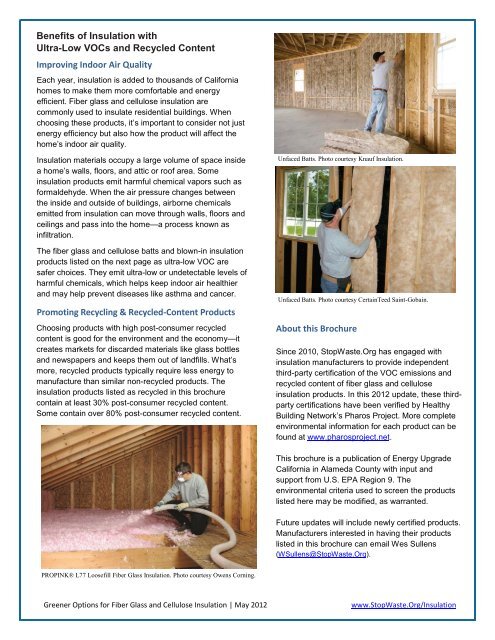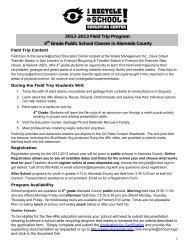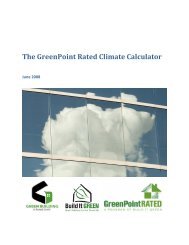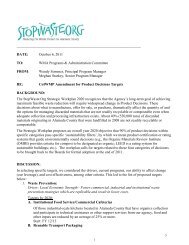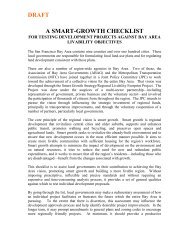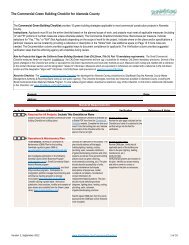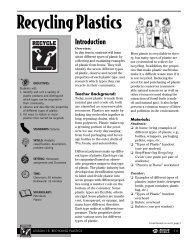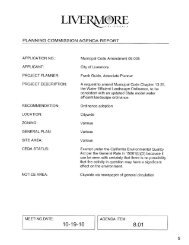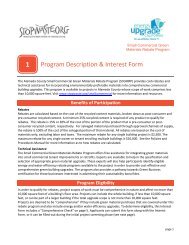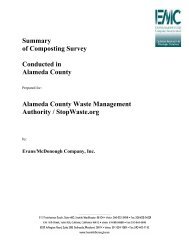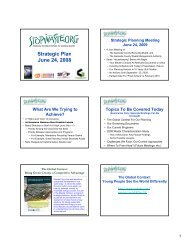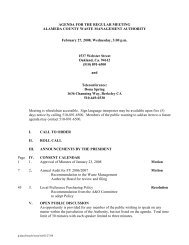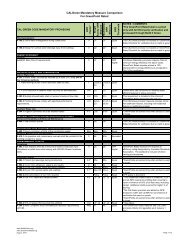Greener Options for Fiber Glass & Cellulose ... - StopWaste.org
Greener Options for Fiber Glass & Cellulose ... - StopWaste.org
Greener Options for Fiber Glass & Cellulose ... - StopWaste.org
- No tags were found...
Create successful ePaper yourself
Turn your PDF publications into a flip-book with our unique Google optimized e-Paper software.
Benefits of Insulation withUltra-Low VOCs and Recycled ContentImproving Indoor Air QualityEach year, insulation is added to thousands of Cali<strong>for</strong>niahomes to make them more com<strong>for</strong>table and energyefficient. <strong>Fiber</strong> glass and cellulose insulation arecommonly used to insulate residential buildings. Whenchoosing these products, it’s important to consider not justenergy efficiency but also how the product will affect thehome’s indoor air quality.Insulation materials occupy a large volume of space insidea home’s walls, floors, and attic or roof area. Someinsulation products emit harmful chemical vapors such as<strong>for</strong>maldehyde. When the air pressure changes betweenthe inside and outside of buildings, airborne chemicalsemitted from insulation can move through walls, floors andceilings and pass into the home—a process known asinfiltration.The fiber glass and cellulose batts and blown-in insulationproducts listed on the next page as ultra-low VOC aresafer choices. They emit ultra-low or undetectable levels ofharmful chemicals, which helps keep indoor air healthierand may help prevent diseases like asthma and cancer.Promoting Recycling & Recycled-Content ProductsChoosing products with high post-consumer recycledcontent is good <strong>for</strong> the environment and the economy—itcreates markets <strong>for</strong> discarded materials like glass bottlesand newspapers and keeps them out of landfills. What’smore, recycled products typically require less energy tomanufacture than similar non-recycled products. Theinsulation products listed as recycled in this brochurecontain at least 30% post-consumer recycled content.Some contain over 80% post-consumer recycled content.Unfaced Batts. Photo courtesy Knauf Insulation.Unfaced Batts. Photo courtesy CertainTeed Saint-Gobain.About this BrochureSince 2010, <strong>StopWaste</strong>.Org has engaged withinsulation manufacturers to provide independentthird-party certification of the VOC emissions andrecycled content of fiber glass and celluloseinsulation products. In this 2012 update, these thirdpartycertifications have been verified by HealthyBuilding Network’s Pharos Project. More completeenvironmental in<strong>for</strong>mation <strong>for</strong> each product can befound at www.pharosproject.net.This brochure is a publication of Energy UpgradeCali<strong>for</strong>nia in Alameda County with input andsupport from U.S. EPA Region 9. Theenvironmental criteria used to screen the productslisted here may be modified, as warranted.Future updates will include newly certified products.Manufacturers interested in having their productslisted in this brochure can email Wes Sullens(WSullens@<strong>StopWaste</strong>.Org).PROPINK® L77 Loosefill <strong>Fiber</strong> <strong>Glass</strong> Insulation. Photo courtesy Owens Corning.<strong>Greener</strong> <strong>Options</strong> <strong>for</strong> <strong>Fiber</strong> <strong>Glass</strong> and <strong>Cellulose</strong> Insulation | May 2012www.<strong>StopWaste</strong>.Org/Insulation


